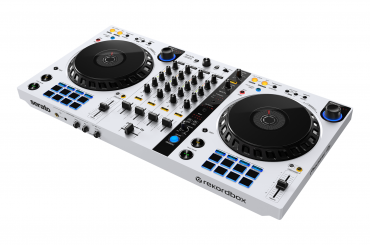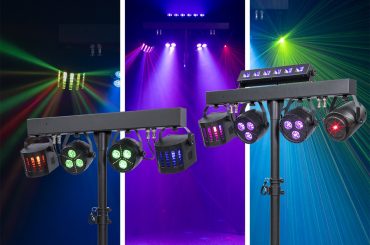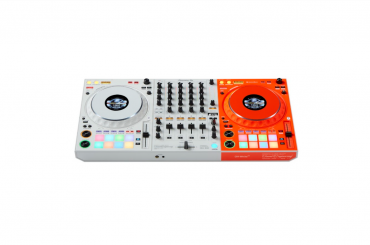Over the years, I’ve had the pleasure of sampling some of the gear from Baton Rouge, La.-based PreSonus Audio Electronics. The company has carved out its spot in the market with a specific array of gear that ranges from the basics, like audio interfaces and both live and studio speakers, to some niche products like the FaderPort studio control surfaces that I reviewed for this magazine not long after their introduction.
Back at Winter NAMM 2020 this past January, I got a peek at some new gear, and recently had a chance to run some of it through its paces: the newly upgraded Eris E8 XT active studio monitors, and the very unique ioStation 24c that doubles as an audio interface and a studio controller. Let’s take a look.
Eris E8 XT
If you’re serious about music production, there’s at least one item in your audio arsenal that’s a must-have, and that’s a decent pair of studio monitors. If you can’t hear your mix and hear it accurately, the rest of your work is for nothing. And as I’ve written many times, I believe that monitors with 8-inch main drivers are about as small as you generally want to go without a dedicated studio subwoofer (and you might still want one even then). As it happens, 8-inches is the biggest in the Eris line, PreSonus’ mainstream monitor series, and yet they still run right about $260 each on the street – not bad.
The company recently upgraded the Eris E8 — hence the “XT” designation on the end of the name. PreSonus claims that the units now have a lower low-end (to 35 Hz), and a wider sweet spot that makes two-people-in-the-room monitoring less of a concern. What I can say subjectively is that they sound pretty awesome; the sound is super-crisp and compares quite favorably to the various studio monitors I regularly use in my home studio.
As always, I use a room-tuning system to evaluate monitors and correct for my sound-treated (but still acoustically imperfect) room, which also lets me see how the monitors perform. Reasonably flat across the range, on the low-end, I start to see some drop-off at 50 Hz, and they cross the usual -10 dB threshold right about the promised 35 Hz.
We could debate whether that’s low enough for critical low-end work, so if that 35 Hz floor leaves you wanting, then you could always opt for one of PreSonus’ Temblor T10 studio subs. That’ll get you down all the way to 20 Hz, according to the company’s spec sheet, but it’ll run you another $430 or so, street price.
In any case, the Eris E8 XT units offer triple inputs (RCA, 1/4-inch TRS, and XLR), and the back panel sports a low cut-off switch, continuous mid- and high-frequency trim to plus/minus 6 dB, and an “acoustic space” switch for compensating for wall or corner placement.
To top it all off, the Eris E8 XT is certainly a handsome devil sitting on my speaker stands — great looks, great sound and a great price seems like a winning combination.
ioStation 24c
Every studio needs some way of getting sound in and out of the computer, so a decent quality audio interface is a must-have for DAW-based music production work. But if you’ve spent any time working with a DAW (digital audio workstation), then you know that reaching for the mouse for every single operation can get exceptionally tedious. It was with all this in-mind that PreSonus created the ioStation 24c.
The “c” at the end of the name is your clue that this unit is one for today’s newer computers with its USB-C interface — perfect for late-model Mac and MacBook users like me. It’s a basic, 2-channel-in/2-channel-out interface, which is adequate for many (and perhaps most) home-studio use cases. (You won’t get enough inputs for things like mics and hardware synthesizers, or enough outputs to handle dual studio monitors by itself for A/B comparisons — but you may have no need for such things.) Speaking of mics, while arguably more of interest for genres other than EDM, the ioStation 24c uses PreSonus’ XMAX mic preamps, while the company claims that its high-quality ADCs provide solid dynamic range to make the most of what you record.
But it’s not the audio interface that makes the ioStation 24c unique; it’s the fact that it also puts all your transport controls right at your fingertips, along with an array of command buttons that are designed to make using your DAW much easier. Of particular note is the cool, motorized fader on the unit; because it’s motorized, it’ll adjust itself to match what the software is doing as you navigate tracks, and tactile control sure beats using a mouse. The “Session Navigator” provides access to controls designed to make it easier and faster to navigate the ubiquitous timeline that’s at the core of any DAW.
As with any control surface, the ioStation 24c can take some getting used to, and initially anyway, will likely slow down your workflow more than it speeds it up. But the more I used it, the more I liked it, and the more efficiency I realized from using it. Even better, I have to say, the unit looks pretty sexy sitting on my studio desktop.
The ioStation 24c supports both Mackie Control and HUI protocols, which translates into the unit working well with the leading DAWs, including Pro Tools, Logic Pro X, and my own go-to DAW, Ableton Live. Even deeper integration is provided with PreSonus’ own Studio One DAW software, a version of which is included.
PreSonus is also bundling what they call its “Studio Magic” collection, which includes a number of virtual instruments and effects from major brands, and now even includes a copy of Ableton Live Light — a plus, in my view, for would-be EDM producers who might be looking to the ioStation 24c as a convenient, all-in-one way to get started. You can pick yours up for right around $300 on the street.
To check out more reviews, click here.
DJ Times Magazine is copyright © 2020 by DJ Publishing, Inc. www.djtimes.com








